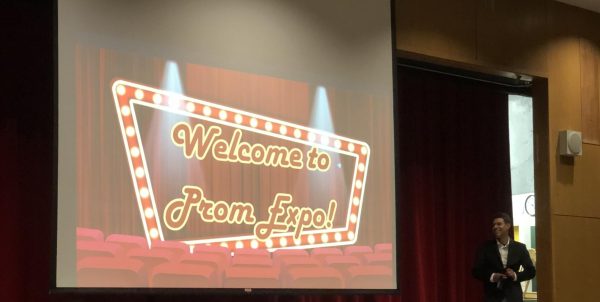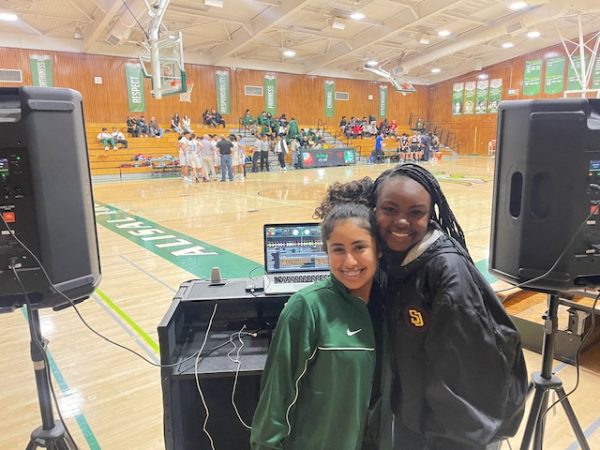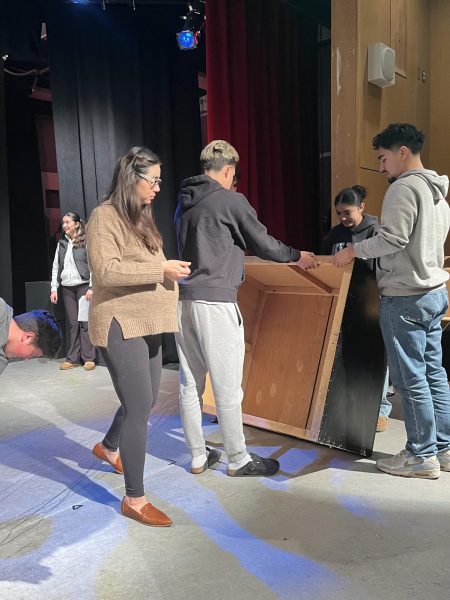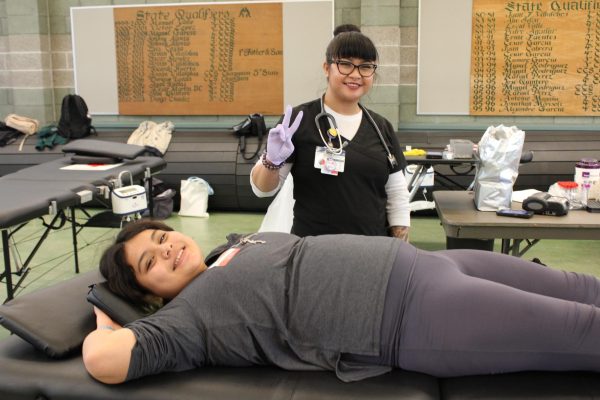Robotics Class
Junior Kayla Fesy is fitting in the sensors to the robot while Joshua Vuong, freshmen, is observing her work. Fesy said, “This class is so refreshing! Computer science is super popular in the career field right now. To get to learn about programming and robotics early on is helpful for my future college plans.”
Robots. When people think about these machines, they think about killer robots like the Terminator or maybe even cute ones, like WALL-E. However, students at Alisal High are not creating any of those, they are building their skills to possibly, one day, make a great advancement in the field of robotics. Computer Science and Robotics teacher Lorand Incze hopes to lead his students on that path.
The Robotics class at Alisal High School, “teaches students how to acquire knowledge about the field of robotics and robotics engineering,” according to Incze. He has his background in robotics; he used to program robots in a furniture manufacturing factory to create engravings. Now, he is teaching his students the art of robotics. Incze said, “Nowadays, Computer Technology, Information Technology (IT) and computer code driven mechanical devices (robots) are incorporated in almost every existing career our students decide to pursue. Therefore, I would recommend this course to anyone who wants to be successful in tomorrow’s technology driven society.” Misael Mendoza, a senior in the class said, “It gives you background information of what you’ve done for college, like if you wanted to go into the field of robotics you already have some knowledge.”
The students in the class go through a series of lessons to acquire techniques to reach their ultimate goal: competitions. The class has already programmed a robot to create an engraving on a piece of wood by imputing points on a x,y, and z plane to create an image. Senior Diana Robles said, “We had this little paper and we had to do a little design and we had to find the coordinates where every single point was. For those points, what we had to do is take them, find out the sequence itself and put it into a computer program, and when we did a computer simulation, it was the shape itself.” Senior Lendi Jimenez said, “I made my name and a heart, because I thought it would be nice to hang on my wall.”
The heart of any machine, and the most important aspect, is its energy source. The students viewed different types of energy sources. However they focused on one the most, hydrogen fuel cells. Incze said, “They use hydrogen and oxygen, two gases, they combine them and they make water and energy; so they are clean, and we use the fuel cells to power robots.” Students had to create a hydrogen fuel cell to power a car so that it could move on its own, “We were all pumped up, we were like ‘Yeah we’re going to race these cars!’, and then they went slow and they were pretty pathetic, but it’s like ‘I powered that without any gas, I powered this with water,’” Robles said.
After the students were brought down from their excitement, they moved on to less intricate machinery, yet important to our daily lives: simple machines. Senior Andres Reyes explained, “A simple machine is something that makes life easier without being overly complicated, like a pulley.” After they have covered these machines, they will put their hands onto the computer to practice C++; a programming language that is used to create large applications. “I think it is (a major part of robotics) because without the coding it (the robot) wouldn’t be able to move,” Mendoza said.
After they have gathered all the necessary skills to create a functional robot, they will head on to the VEX Robotics Competition Nothing But Net competitions. “Competition occurs in different places, there are many competitions happening every month; and you can go with your students whenever you’re ready. We’ll probably be ready around April, so that’s when we’re going to go to the competition,” Incze said. The competition will be in San Jose and they will be regionals, so they will be competing against other high schools in the area.“Honestly, I look forward to the robotics competition, I’m not deluding myself that I may be part of the team, but it’s so cool if an Alisal team is going to be taken over to San Jose and actually compete with other kids,” Robles said.
The competition consists of two alliances, red and blue, with two teams each. The alliances will have two robots each that they will have to program to act independently and be able to pick up a ball and shoot it at a net to score. The teams will then have to change their robot so that they can be driver-controlled. If they score in a low goal they will gain 1 point each, and if they score in a high goal they earn 5 points each; and there will be a bonus ball worth twice as many points as normal balls. There will be 94 balls and 10 bonus balls available in the game, of which four can be pre-loaded on or in the robot. But that’s not all, they will also be challenged on how their robot performs in an elevation test; the purpose of this one competition is how high can a robot elevate their partner’s robot. For a low elevation they will gain 25 points; if it’s a high elevation it will be 50 points. However, they will have a time limit adding to their pressure on which alliance is better.
Overall, the students learn a lot more than just robotics and teamwork, “It focuses a lot in physics concepts, especially in mechanic concepts, it focuses on basic chemistry and it focuses a lot on acquiring knowledge to build and program robots,” Incze said. Robles said, “I like the fact that it’s really hands on, that class is different because you are right there working on things and we spend a lot of time in groups so it’s kind of a ‘ What do you think?’ so we work together to find out what we’re going to do.” The students will gain more than just a regular education, these students will gain actual field experience which will benefit them if they pursue this type of career.
If, after going through all the hard work and the competitions, a student was to decide to continue in the field of robotics, the student could take the decision to take the three year bachelor science program offered at Hartnell College for one and a half years and continue at CSUMB for the second half. Reyes said he would consider a field in robotics, “As a little kid I would enjoy tinkering with objects, like cars and trucks and would enjoy taking them apart.” Incze said, “If they move ahead and they follow the computer science pathway at Hartnell or any other place, they get a computer science major, and you’re off with an $80,000 salary.” He also said, “The long term benefit is that they can apply their knowledge in any technology driven field; for example if they wish to change their job later in life.”
Your donation will support the student journalists of Alisal High School. Your contribution will allow us to purchase equipment and cover our annual website hosting costs.














Brandon • Jan 25, 2016 at 2:46 pm
Nerds are getting a little too comfortable these days.